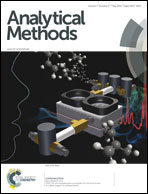The research of temperature properties of photoacoustic spectroscopy detection for SF6 decomposition products in gas insulated switchgear
Abstract
Photoacoustic (PA) spectroscopy technology has proved to be effective in detection of SF6 decomposition products. But in the real application environment, the stability of the PA spectroscopy device is strongly affected by ambient temperature. In this paper, we took CO as an example to analyze the impact mechanism of temperature and the temperature correction formula of the response factor of carbon monoxide (PA signal corresponding to unit concentration gas) was derived. The real temperature properties of SF6 and CO were studied using a non-resonant PA spectroscopy device designed by our team. The study indicates that the PA signals of SF6 and CO are inversely proportional to temperature, which coincides with the theoretical derivation. A temperature correction method was proposed based on theoretical derivation combined with experimental study and this method was tested and validated. The results show that the relative errors of calculated concentrations of CO acquired by the correction method compared to the actual concentrations are all within 10%, which meets the detection requirements of PA spectroscopy for SF6 decomposition products in gas insulated switchgear. The correction method has provided an effective way for studying the temperature correction in PA detection for SF6 decomposition products in GIS.


 Please wait while we load your content...
Please wait while we load your content...